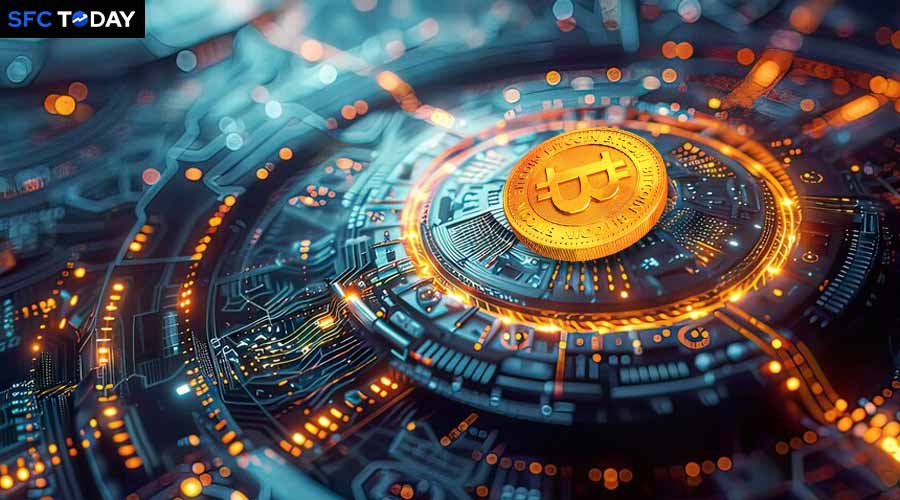Explore the top 10 advances in quantum cryptography
Quantum cryptography is revolutionizing the field of secure communication by leveraging the fundamental principles of quantum mechanics. This burgeoning field promises unparalleled security against eavesdropping and cyber threats. Here, we delve into the top ten advances in quantum cryptography that are shaping the future of secure communication.
1. Quantum Key Distribution (QKD)
Quantum Key Distribution (QKD) is the cornerstone of quantum cryptography. It enables two parties to generate a shared, secret key that can be used for secure communication. The most notable QKD protocol is BB84, developed by Charles Bennett and Gilles Brassard in 1984. This protocol utilizes the principles of quantum mechanics, such as superposition and entanglement, to ensure that any eavesdropping attempt alters the state of the quantum particles, thereby alerting the communicating parties. Recent advancements have significantly improved the efficiency and security of QKD systems, making them more practical for real-world applications.
2. Device-Independent QKD (DI-QKD)
Device-Independent QKD (DI-QKD) takes the security of QKD a step further by eliminating the need to trust the devices used in the protocol. Traditional QKD systems assume that the hardware is secure, but DI-QKD ensures that the security of the key distribution is maintained even if the devices are compromised. This approach leverages the principles of entanglement and non-locality, providing robust security against potential hardware vulnerabilities. DI-QKD represents a significant step towards more secure quantum communication systems .
3. Continuous-Variable QKD (CV-QKD)
Continuous-variable QKD (CV-QKD) differs from traditional QKD methods that use discrete variables, such as photon polarization. Instead, CV-QKD employs continuous variables, like the quadratures of the electromagnetic field. This method allows for seamless integration with existing telecommunication infrastructure, enhancing its practicality for widespread deployment. Researchers have focused on improving the performance and security of CV-QKD systems, making them a viable option for real-world applications.
4. Quantum Repeaters
One of the primary challenges in quantum communication is the transmission of quantum information over long distances. Quantum repeaters are essential for extending the range of QKD systems by mitigating the effects of photon loss and decoherence. These devices enable the creation of entangled particles over vast distances, ensuring the integrity and security of the transmitted information. Advances in quantum repeater technology are crucial for developing global quantum communication networks.
5. Satellite-Based QKD
Satellite-based QKD systems have the potential to revolutionize secure communication by providing secure links over intercontinental distances. The Chinese satellite Micius has demonstrated the feasibility of this approach by achieving secure key distribution between ground stations thousands of kilometers apart. This breakthrough opens up new possibilities for global quantum communication networks, making secure communication accessible on a global scale.
6. Quantum Cryptographic Algorithms
Beyond QKD, quantum cryptographic algorithms are being developed to secure data against quantum attacks. These algorithms leverage the principles of quantum mechanics to provide security guarantees that are not achievable with classical cryptographic methods. Advances in this area are crucial for protecting sensitive information in the quantum era, ensuring that data remains secure even in the face of powerful quantum computers.
7. Quantum Digital Signatures
Quantum digital signatures provide a way to verify the authenticity and integrity of a message using quantum mechanics. These signatures are secure against both classical and quantum attacks, making them a powerful tool for secure communication. Recent research has focused on developing practical and efficient quantum digital signature schemes, which are essential for ensuring the authenticity of digital communications in a quantum-secure manner.
8. Quantum Data Locking
Quantum data locking is a technique that uses quantum mechanics to lock information in such a way that it can only be accessed with the correct quantum key. This method provides a high level of security and has potential applications in secure data storage and transmission. Advances in quantum data locking are paving the way for new secure communication protocols, offering an additional layer of protection for sensitive information.
9. Quantum Secure Direct Communication (QSDC)
Quantum Secure Direct Communication (QSDC) allows for the direct transmission of secure messages without the need for a pre-shared key. This method leverages the principles of quantum mechanics to ensure the security of the communication. Recent advancements in QSDC have improved its efficiency and practicality, making it a promising approach for secure communication. QSDC provides an innovative solution for scenarios where establishing a pre-shared key is impractical .
10. Post-Quantum Cryptography (PQC)
Post-quantum cryptography (PQC) involves developing cryptographic algorithms that are secure against quantum attacks. While not strictly a part of quantum cryptography, PQC is essential for ensuring the security of classical systems in the quantum era. These algorithms are designed to be resilient to the computational power of quantum computers, protecting existing communication infrastructure from future quantum threats. Advances in PQC are crucial for safeguarding sensitive information as quantum computing technology continues to evolve.
The field of quantum cryptography is rapidly advancing, offering innovative solutions for secure communication. From Quantum Key Distribution and Device-Independent QKD to Quantum Repeaters and Satellite-Based QKD, these advancements are laying the foundation for a future where secure communication is guaranteed by the laws of quantum mechanics.
As research continues to progress, we can expect even more groundbreaking developments, further enhancing the security and reliability of our communication systems. Embracing these technologies will be pivotal in protecting sensitive information in an increasingly digital and interconnected world.







